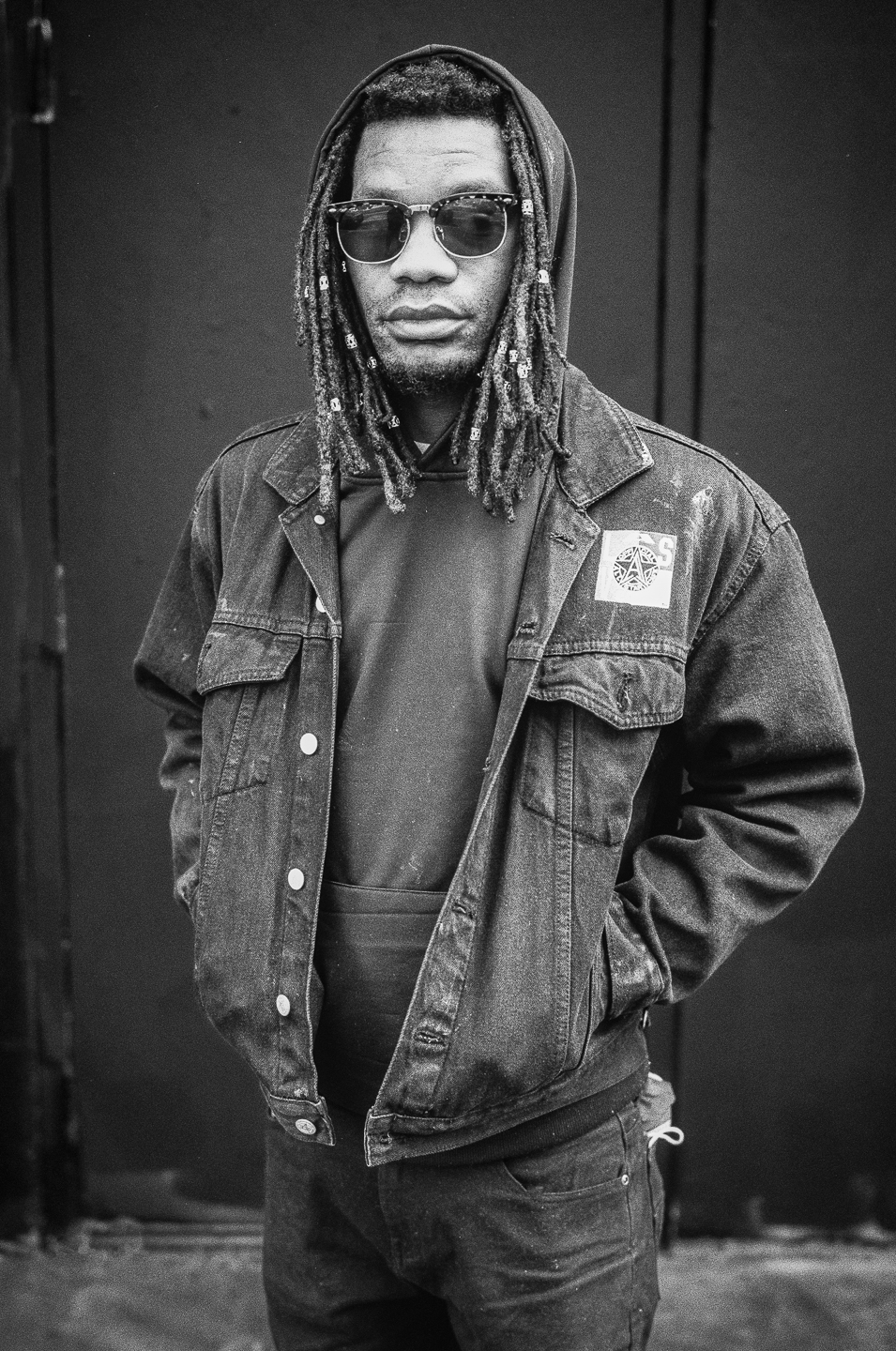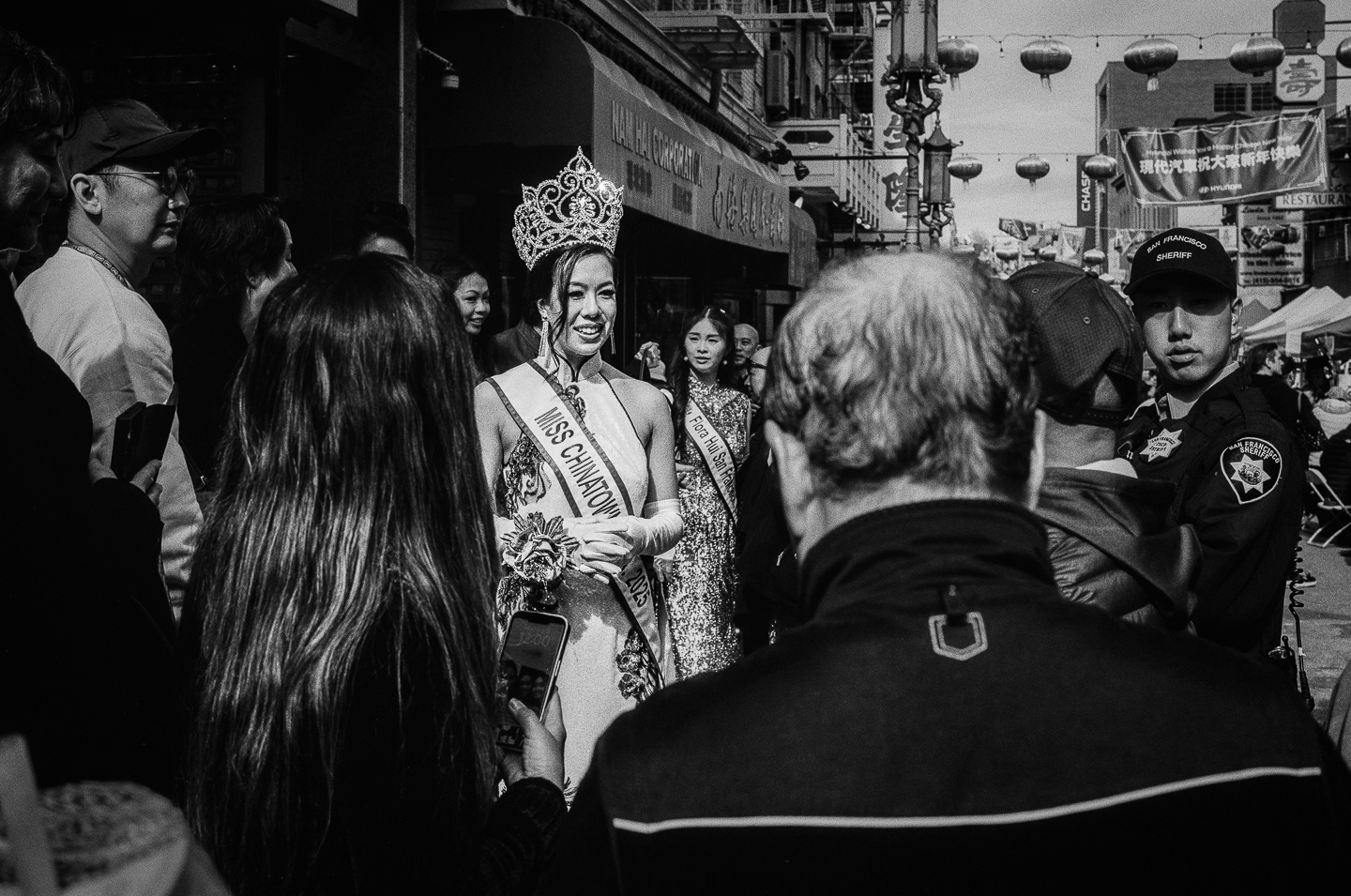When I decided to take my film camera to the “We Fight Back” march in San Francisco on January 19 in San Francisco, I got to experience the limitations photojournalists faced back in the film era. No autofocus. No auto exposure. One focal length at a time with primes. No burst mode. No SD card that holds thousands of photos—instead, you get maybe two rolls’ worth of shots, which, in my case, meant 72 photos. But I started out with one roll about half-used, so I didn’t even get that many.
Despite all those limitations, I liked the experience. Every shot required a new set of decisions—including whether or not to take the shot at all. I had to constantly change the focus, and often the exposure, because the sun would go behind a cloud, then come back out again, and the light on the scene would completely change. I had to zoom with my feet. People would move into and out of the frame. The background would change as the march moved through the streets of the city. I couldn’t look at an LCD on the back of my camera to see if I was getting the shots or not. Add all that up and you can appreciate that it was not an easy assignment!
This is at City Hall, the assembly point, before the march started.
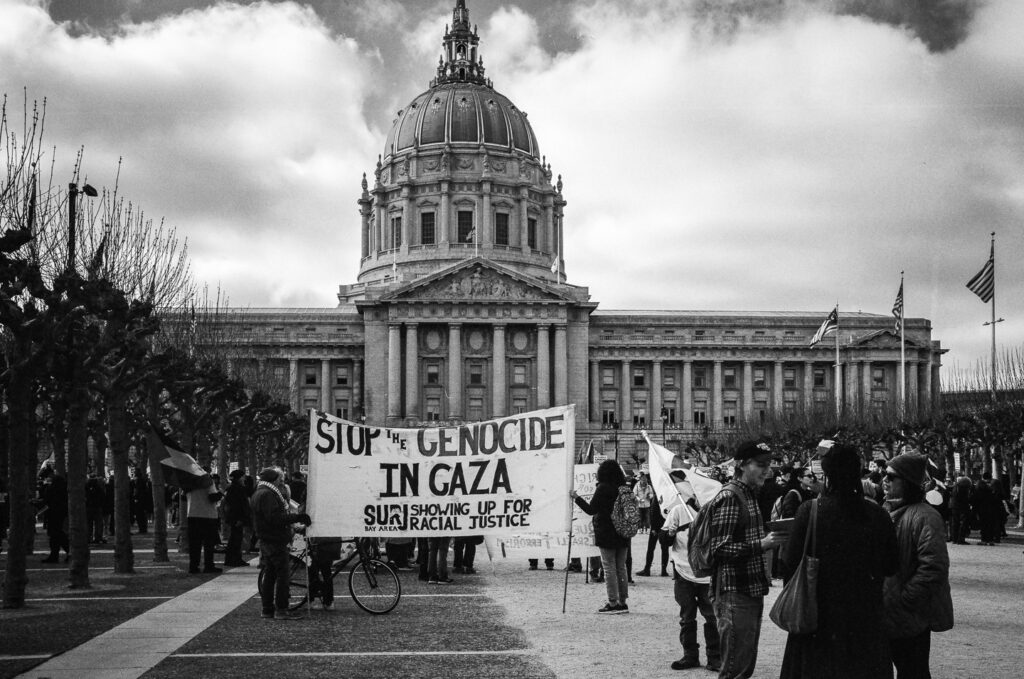
Walking down Market St. It was overcast at this moment, as you can see from the even lighting across the frame.
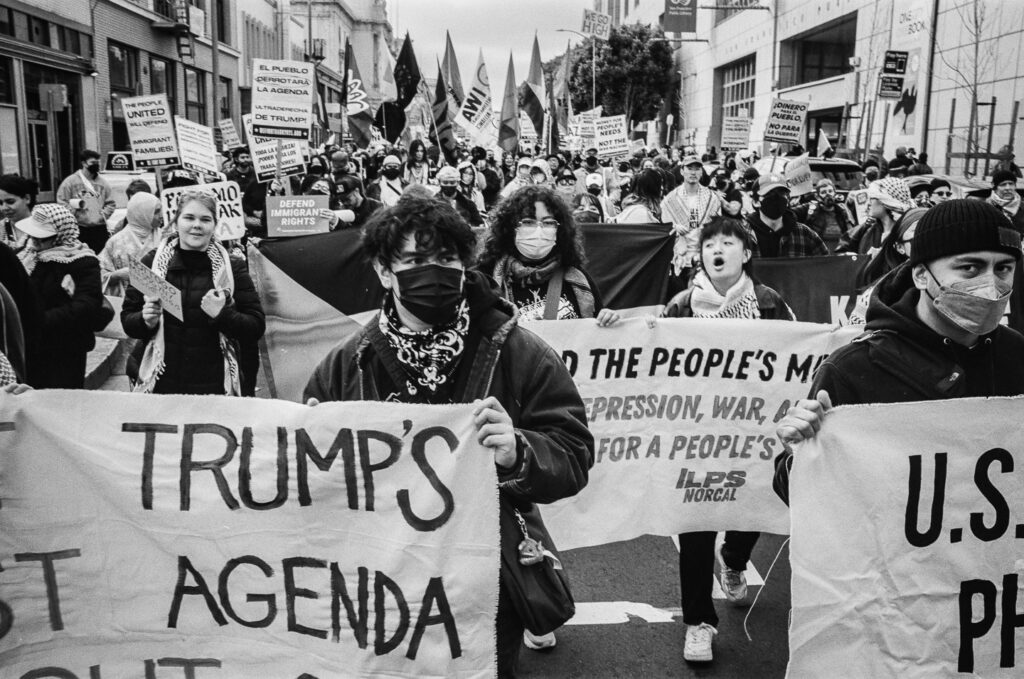
Then the sun came out, and the marchers were backlit, and I had to recalculate the exposure.
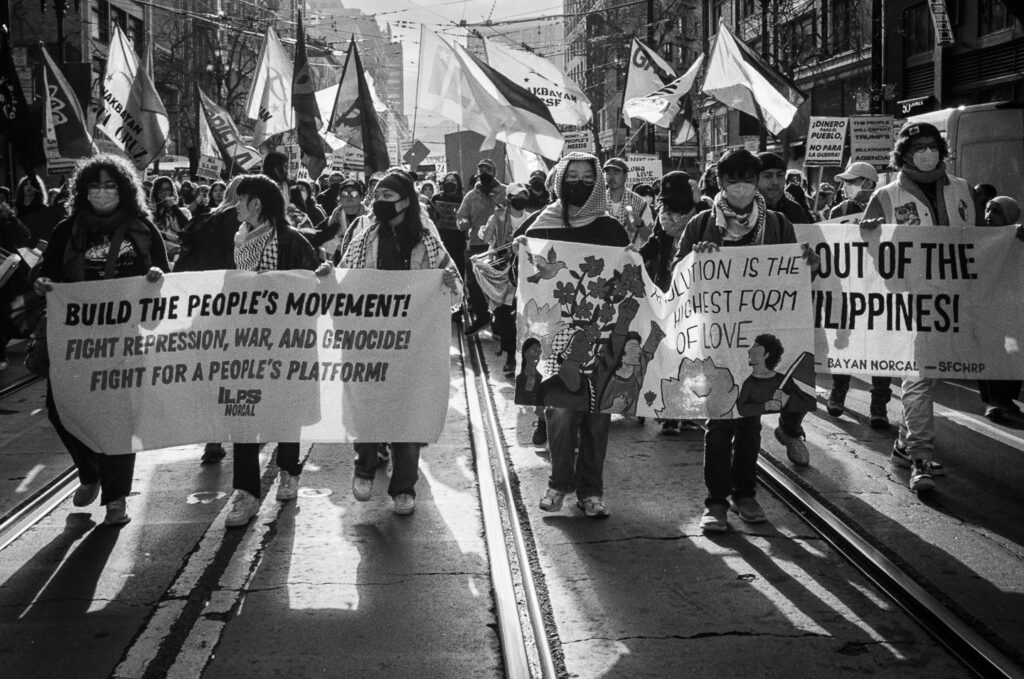
Turning a corner on Market St., the protesters were lit from the side. More adjustments.
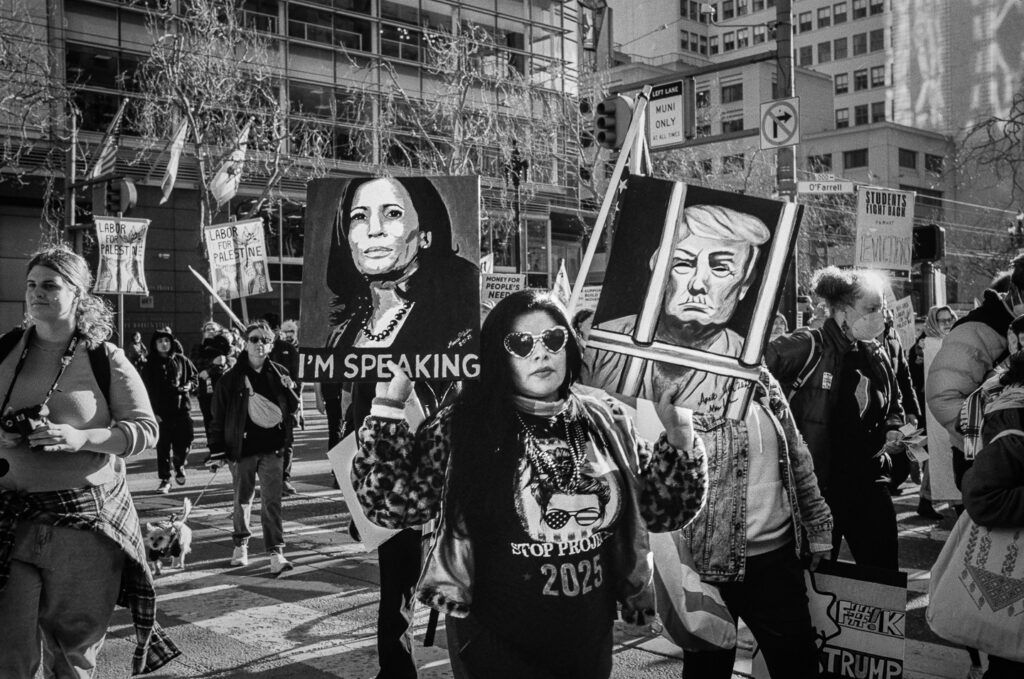
Walking back up Market St. to return to City Hall, the scene was front-lit. The adage “film likes light” is true—these shots were the most detailed and contrasty.
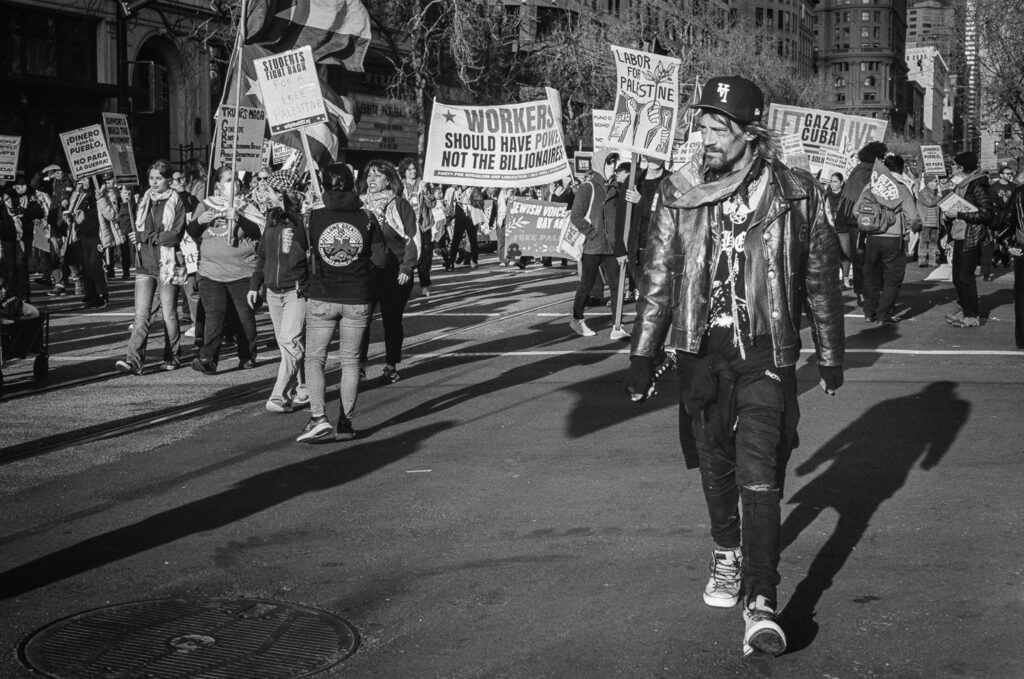
I know that digital cameras and zoom lenses make it much easier to get in-focus, properly exposed, tightly framed shots—if I’d brought my modern mirrorless camera, I would have returned with many more keepers … but would have felt less a sense of accomplishment.
